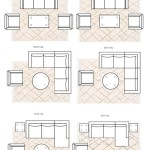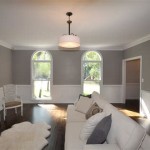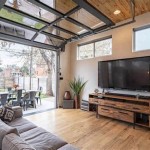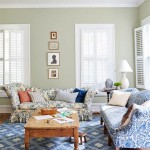Drop Ceiling Ideas For Living Room Enhancement
Drop ceilings, also known as suspended ceilings or T-bar ceilings, offer a versatile and practical solution for enhancing the aesthetics and functionality of a living room. While historically associated with commercial spaces, modern designs and material options have made them increasingly popular for residential use. They provide an opportunity to conceal unsightly wiring, ductwork, and plumbing, while simultaneously offering improved acoustics, energy efficiency, and a platform for integrated lighting solutions. The selection and installation of a drop ceiling require careful consideration of the room's dimensions, design preferences, and functional needs. This article aims to explore various drop ceiling ideas suitable for living rooms, emphasizing design considerations and practical implementation.
Acoustic Considerations and Material Selection
One of the primary benefits of a drop ceiling in a living room is its ability to improve acoustics. Living rooms often serve as spaces for entertainment, relaxation, and conversation, making sound absorption a crucial factor. The choice of ceiling tiles significantly impacts the room's acoustic properties. Mineral fiber tiles, commonly used in commercial settings, offer excellent sound absorption coefficients (SAC). These tiles are effective in reducing echo and reverberation, creating a more comfortable and quieter environment. However, mineral fiber tiles may not always align with desired aesthetic preferences for a living room.
For a more visually appealing option, consider fabric-wrapped acoustic panels. These panels consist of a sound-absorbing core covered with a decorative fabric. The fabric can be customized to match the room's color scheme and design style. Fabric-wrapped panels offer a balance between acoustic performance and aesthetic appeal. Furthermore, integrating soundproofing measures into the plenum space above the drop ceiling can further enhance sound isolation. This can involve adding insulation batts or sound-dampening materials to minimize sound transmission between floors.
Beyond acoustics, the material selection also impacts the overall durability and maintenance requirements of the drop ceiling. Mineral fiber tiles are relatively easy to clean and replace, but they can be susceptible to moisture damage. In living rooms prone to humidity, moisture-resistant tiles or vinyl-faced gypsum panels are preferable. These materials offer increased resistance to warping and staining. Metal ceiling tiles provide a durable and visually striking option. They are available in various finishes, including brushed aluminum, stainless steel, and powder-coated colors. Metal tiles are resistant to moisture and mold, making them suitable for a wide range of environments. However, metal tiles may reflect sound, potentially diminishing the acoustic benefits of the drop ceiling.
Integrated Lighting and Design Styles
A drop ceiling provides a convenient platform for integrating various lighting solutions. Recessed lighting, such as pot lights or can lights, is a popular choice for living rooms. These lights are installed flush with the ceiling surface, providing a clean and minimalist look. Recessed lighting can be used for general illumination, task lighting, or accent lighting. The placement and spacing of recessed lights should be carefully planned to ensure even distribution of light and to avoid creating harsh shadows.
Another option is to incorporate linear LED lighting fixtures into the drop ceiling grid. These fixtures provide a continuous line of light, adding a contemporary and sophisticated touch to the living room. Linear LED lights can be used to create different lighting effects, such as wall washing or accentuating architectural features. Furthermore, cove lighting can be integrated into the drop ceiling design. Cove lighting involves concealing light sources behind a built-in ledge or recess, creating a soft and diffused glow. This type of lighting is ideal for creating a relaxing and ambient atmosphere.
The design style of the drop ceiling should complement the overall aesthetic of the living room. For a modern living room, a minimalist drop ceiling with smooth, white tiles and recessed lighting may be appropriate. For a more traditional living room, consider using decorative ceiling tiles with intricate patterns or textures. Wood-look ceiling tiles can add warmth and character to a living room, while metal tiles can create a sleek and industrial feel. The choice of grid color also plays a crucial role in the overall design. A white grid can blend seamlessly with the ceiling tiles, while a black grid can create a more defined and contrasting look. Consider using a suspended ceiling system that allows for the integration of decorative elements, such as crown molding or trim, to further enhance the aesthetic appeal.
Practical Considerations and Installation
Before installing a drop ceiling, it is essential to carefully measure the dimensions of the living room and determine the desired ceiling height. The minimum ceiling height required for a drop ceiling is approximately 8 feet to ensure adequate headroom. The drop ceiling grid is typically suspended from the existing ceiling using wires or metal hangers. The spacing between the hangers should be determined based on the weight of the ceiling tiles and the manufacturer's recommendations. The grid should be level and square to ensure a professional and aesthetically pleasing result.
The installation process involves attaching the perimeter wall angles to the walls, installing the main runners and cross tees to form the grid, and then placing the ceiling tiles into the grid. It is important to ensure that the tiles are properly aligned and that there are no gaps or inconsistencies. When installing lighting fixtures or other electrical components, it is crucial to adhere to all relevant electrical codes and safety regulations. Consider hiring a qualified electrician to handle the electrical wiring and connections.
Accessibility to the plenum space above the drop ceiling is a significant advantage. The individual tiles can be easily removed for maintenance, repairs, or upgrades to the wiring, plumbing, or HVAC systems. This accessibility eliminates the need to cut or damage the ceiling, saving time and money. Furthermore, access panels can be strategically placed in the drop ceiling to provide convenient access to specific areas of the plenum. When selecting a drop ceiling system, it is important to consider the ease of installation, maintenance, and replacement of components. A well-designed and properly installed drop ceiling can enhance the aesthetics, functionality, and value of a living room for many years to come.
Furthermore, consider the impact of the drop ceiling on the overall lighting design of the living room. The reflectivity of the ceiling tiles can affect the brightness and distribution of light. White or light-colored tiles reflect more light, while darker tiles absorb more light. The choice of tile color should be based on the desired lighting effect and the amount of natural light available in the room. Consider using dimmable lighting fixtures to adjust the brightness of the lights and create different moods. Smart lighting systems can be integrated into the drop ceiling design, allowing for remote control and customization of the lighting settings.
The integration of ventilation and air conditioning systems is another practical consideration. The drop ceiling can conceal ductwork and diffusers, creating a cleaner and more streamlined look. Ensure that the ventilation system is properly designed to provide adequate airflow and prevent stagnant air pockets. Diffusers can be placed in the drop ceiling to distribute air evenly throughout the room. Consider using linear diffusers or grilles that blend seamlessly with the ceiling tiles. Furthermore, fire-rated ceiling tiles can be used to improve the fire safety of the living room. These tiles are designed to resist the spread of fire and provide additional protection in the event of a fire.
In conclusion, drop ceilings offer a multitude of design and functional benefits for living room applications. From acoustic improvements and integrated lighting to concealed infrastructure and aesthetic enhancements, the possibilities are diverse. Careful planning, material selection, and professional installation are key to achieving a successful and long-lasting drop ceiling solution that elevates the living room experience.

Drop Ceiling Design Ideas Ceilings Armstrong Residential

Suspended Ceiling Living Room Design With

30 Minimalist False Ceiling Designs For Living Room Interior Design

Beautiful False Ceiling Tile Designs For Your Home Homes

11 Living Room Ceiling Ideas You Ll Wish D Known Sooner

False Ceiling Designs Ideas To Make Your Living Room Look Amazing

3 Reasons Why Your Living Room Needs A False Ceiling Hippo Homes

Dropped Ceilings

Best False Ceiling Designs For Living Room Designcafe

Best False Ceiling Design Ideas For Living Rooms In 2025 Gyproc








